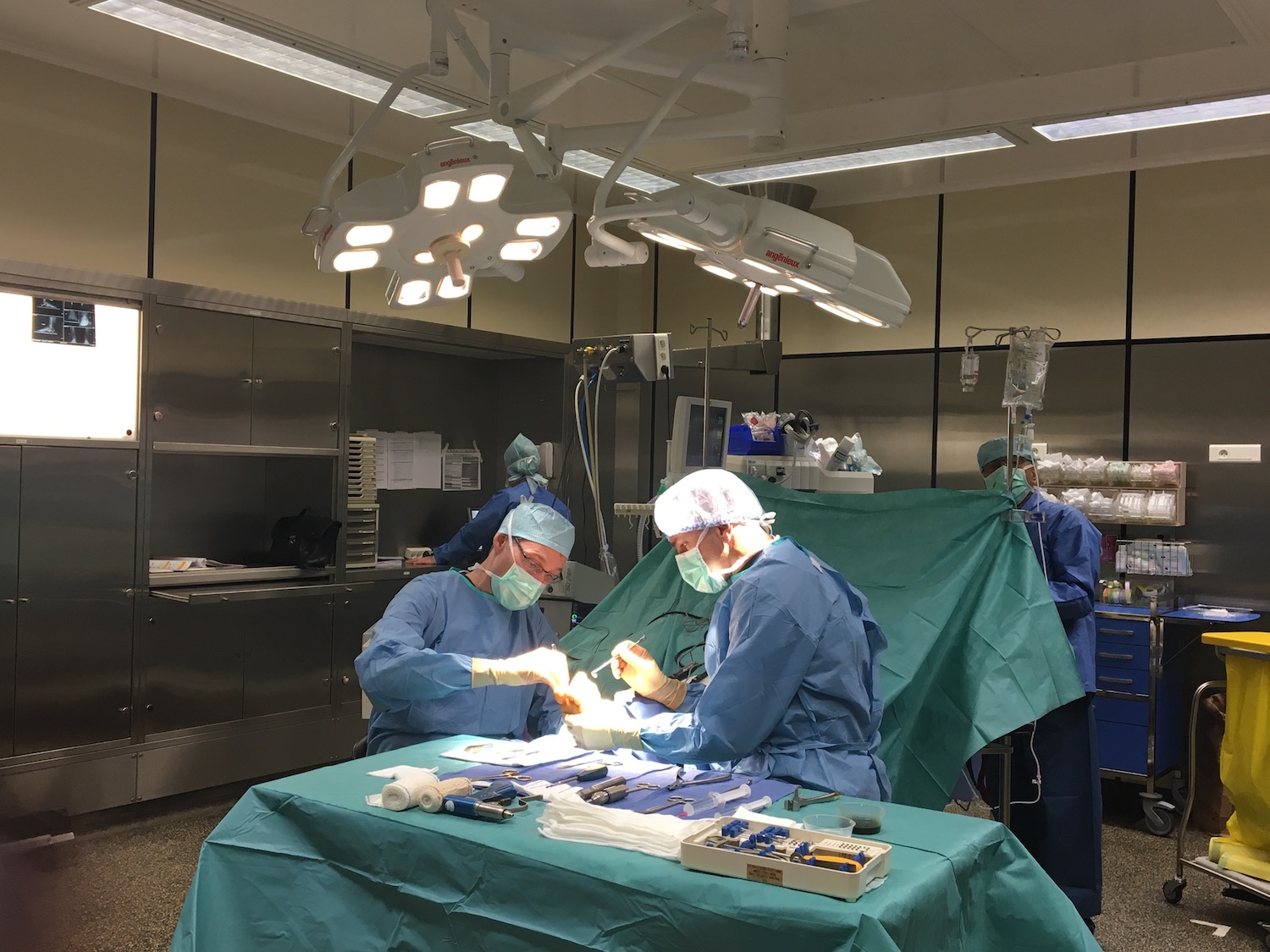
Foot surgeon nice
Foot surgery | Hallux Valgus | Nice
Dr Becquet's office
The Saint George Clinic
2 Avenue de Rimiez
06105 Nice
Tel : 04 93 169 169
Minimally invasive and percutaneous surgery
Outpatient procedure
Immediate resumption of support
An operation taking half an hour.
The operation can be performed by percutaneous surgery (incision of the order of a millimeter) or minimally invasive (incision of the order of a centimeter)
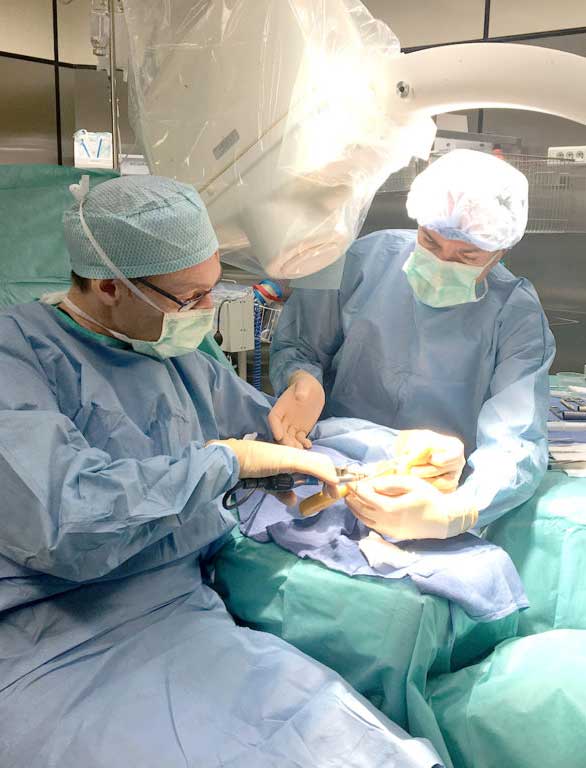
Foot surgeon nice
When is it necessary to have surgery?
The essential criterion is the level of pain that the patient complains of. For a similar deformity, the feeling of pain can be completely different from one person to another. When walking and shoeing become painful, it is essential to put the option of surgery on the table.
A hallux valgus cannot resolve itself, it will necessarily deteriorate more or less quickly and progressively evolve towards a self-deformation.
The earlier the surgery is performed, the more likely it is to permanently prevent recurrence and the less invasive it will be.
Indeed, the new techniques of intervention can be used, they are much less cumbersome and have postoperative consequences in general limited.
Percutaneous surgery
This technique appeared a few years ago and is increasingly used for hallux valgus. When properly performed, it offers many advantages. It consists of operating through the skin, making mini incisions just sufficient to pass miniaturized instruments.
It is not possible for the surgeon to see directly what he is doing. His touch and his experience will be essential. Nevertheless, he has a complementary technique that allows him to have a vision of the operation: the fluoroscopic image intensifier.
It consists of using a very low-powered x-ray machine that allows visualization of a key element in the treatment of hallux valgus: the bones. The device is of course qualified and sterilized, and its radiation level is low enough for surgeons to use it very regularly without risk. Note that this technique is only an aid and an extension of the surgeon's feeling. Nothing can replace his know-how and experience.
The advantages of this technique are obvious: the incisions are very small, pain is reduced and recovery is faster. It allows to avoid hospitalization.
What will be the level of pain?
The techniques used in the past have tarnished the image of this type of surgery to treat hallux valgus. Mini-invasive techniques and advances in local anesthesia allow for operations with very little pain in the overwhelming majority of cases.
As sensitivity to pain is not the same for all people, it is not possible to guarantee a "zero pain" procedure. However, the fact that this procedure is only performed on an outpatient basis is a sign that the management of postoperative pain does not generally pose any serious problems.
The management of pain is done very seriously in spite of everything. The quality of the local anesthesia will of course make it possible to feel no pain during the operation, but its effects will last at least 12 hours, limiting the pain that would immediately follow the operation. It is in fact in these hours following the operation that the pain can reappear, and the fact of having a prolonged analgesia in the operated area makes it possible to reduce post-operation stress and anxiety.
This device is complemented by a special device that will help the patient manage any pain once they leave the hospital. In the past, the patient had to stay in the clinic with an infusion to get an electric syringe.
Now the patient has a single-use analgesic diffuser which, with the help of home nurses, allows the patient to return home as soon as possible. This has several important advantages. The patient can indeed
- Eat at home and sleep outside the clinic
- To be quiet compared to the noisy environment of a clinic
- Be surrounded by your loved ones without restriction.
Operations to treat hallux valgus
When symptomatic treatment options are exhausted, the only option left is surgery. It is the only way to eradicate the cause and the pain. The technique to be used must be shared between the patient and the practitioner. There are several approaches. The first is the percutaneous technique, which leaves only almost invisible incisions, and the second is called mini-invasive, and will be performed with incisions limited to 2 centimeters.
The procedures are performed with local anesthesia and sedation (optional). The patient does not need to stay at the clinic in the evening, and can leave immediately after the procedure.
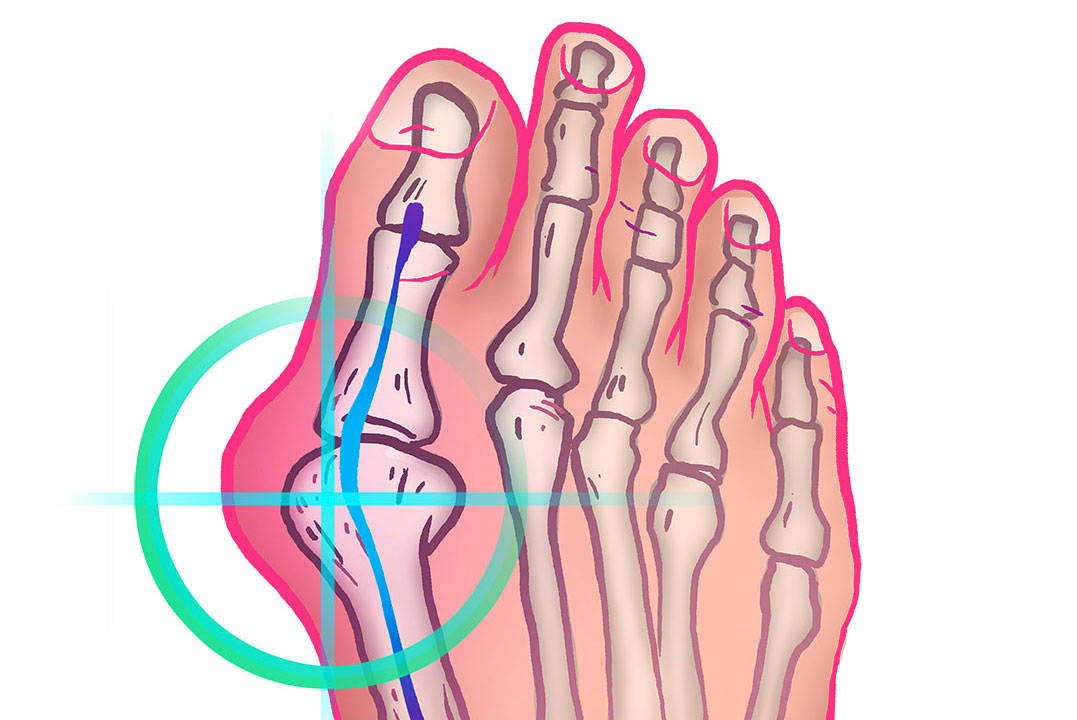
The mini-invasive technique
Surgery is said to be minimally invasive when the incisions made are of the order of 2 centimeters. However, the techniques used inside the foot are similar to those used in conventional surgery.
Once the incisions have been made, the surgeon will carry out the operation. By performing osteotomies with specific instruments, most of which are inspired by the percutaneous technique.
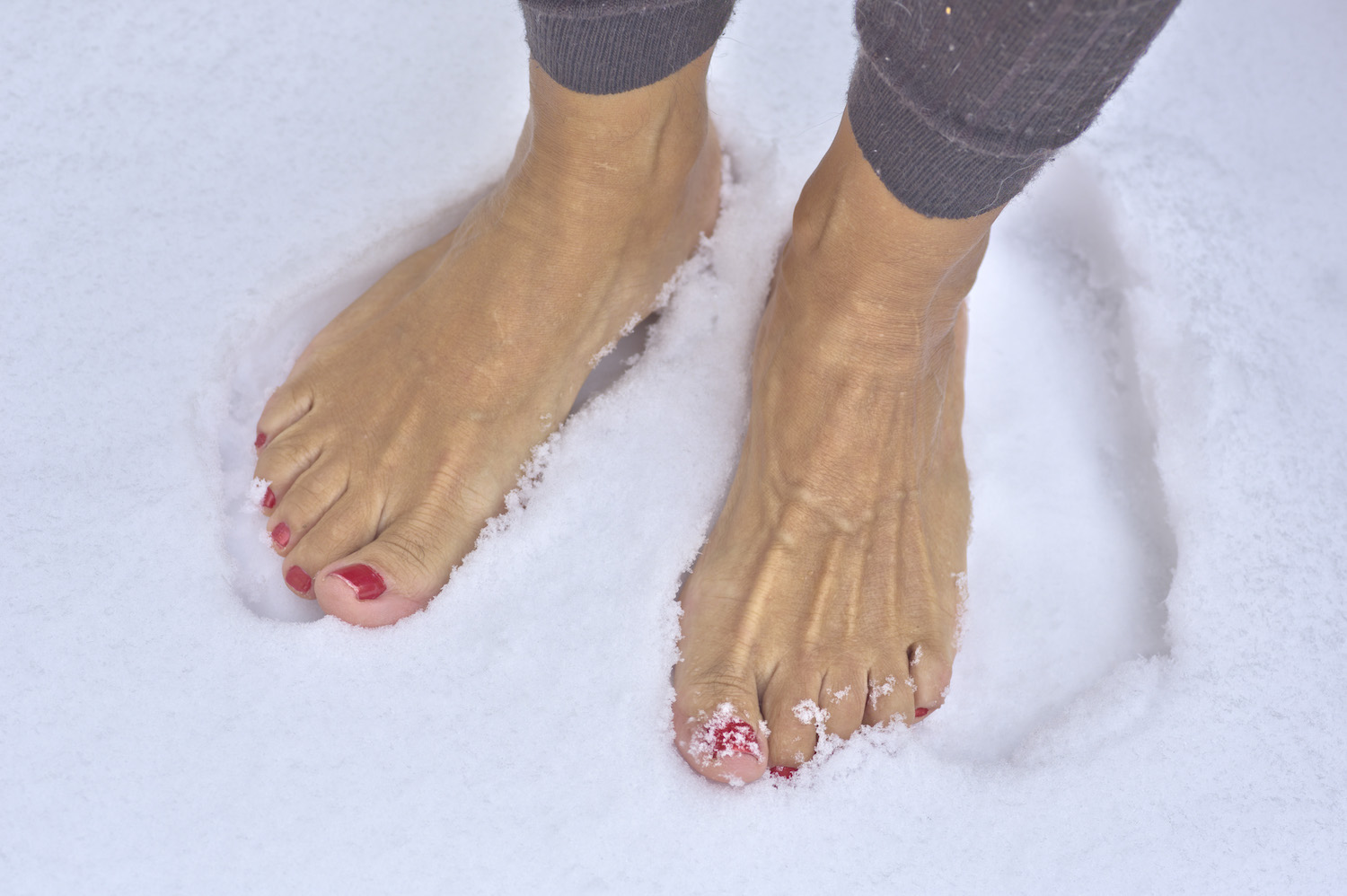
How long will it take for me to walk normally?
The techniques used allow the patient to regain support on his or her foot immediately after the operation, with the help of a specific shoe that the patient will have to keep for about a week. The resumption of support must be done with the entire sole of the foot. Indeed, one should not walk by pressing on the side of the foot or on the heel. This is not necessarily obvious and many patients instinctively do not respect this instruction. It is normal to be apprehensive about resuming walking after the operation, so a progressive protocol is recommended to reassure patients.
During the first week, walking is allowed but must be limited to what is strictly necessary. It is recommended not to leave your home. Treading and prolonged standing without walking should be avoided. When the patient sits or lies down, it is recommended to elevate the foot and leg.
The following week, the patient can walk outside the home, gradually. Walking periods should be limited to about 15 minutes, but should not exceed a total of two hours per day.
Gradually increase the amount of walking according to how you feel. It is advisable to abandon the special shoe for good and to put on a soft, flat shoe such as sneakers.
The time off work depends on the activity. Work can be resumed after two weeks in favorable cases. Of course, the activity must not require a lot of walking or repetitive "stomping". If this is not the case, the recovery period will have to be extended. In case of an early return to work, it must be possible to elevate the foot when the patient is sitting.
In general, as a precaution, the prescribed time off work is about three weeks.
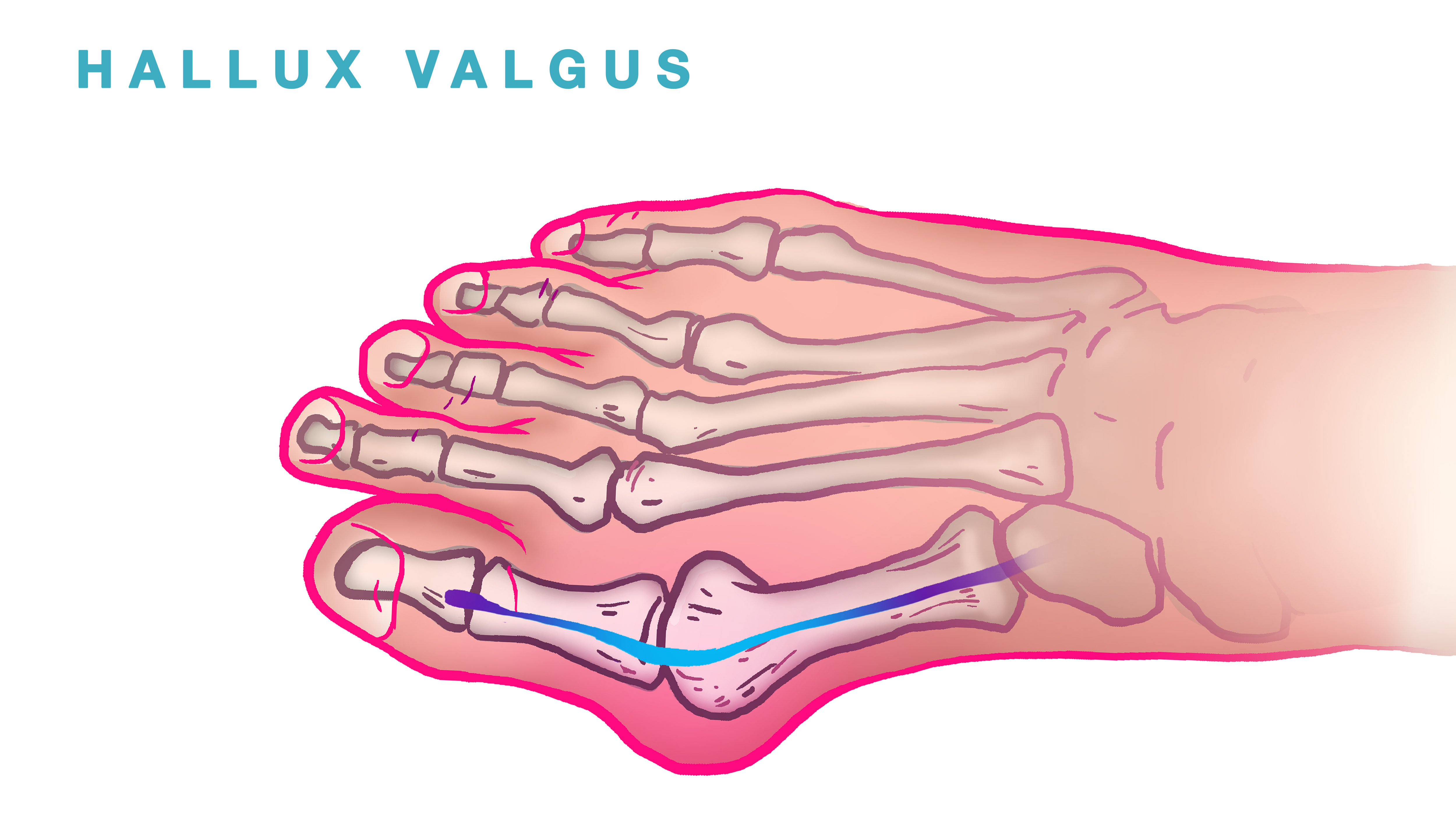
New techniques for hallux valgus
For several years, much less invasive techniques have been developed to treat hallux valgus. They consist in making very small incisions instead of having a large operating field. They are therefore more complicated for the surgeon to implement.
The benefits of minimally invasive and percutaneous procedures for the treatment of hallux valgus
The percutaneous technique is very recent in Europe. It is a tool that must be adapted to the procedure. It is not systematically used for hallux valgus and should not be. It consists of performing an operation through the skin, using miniaturized instruments dedicated to this type of surgery.
This allows:
-The fact that the patient does not remain hospitalized
-Prompt recovery
-Less swelling and pain
-A possibility to walk very quickly after the operation.
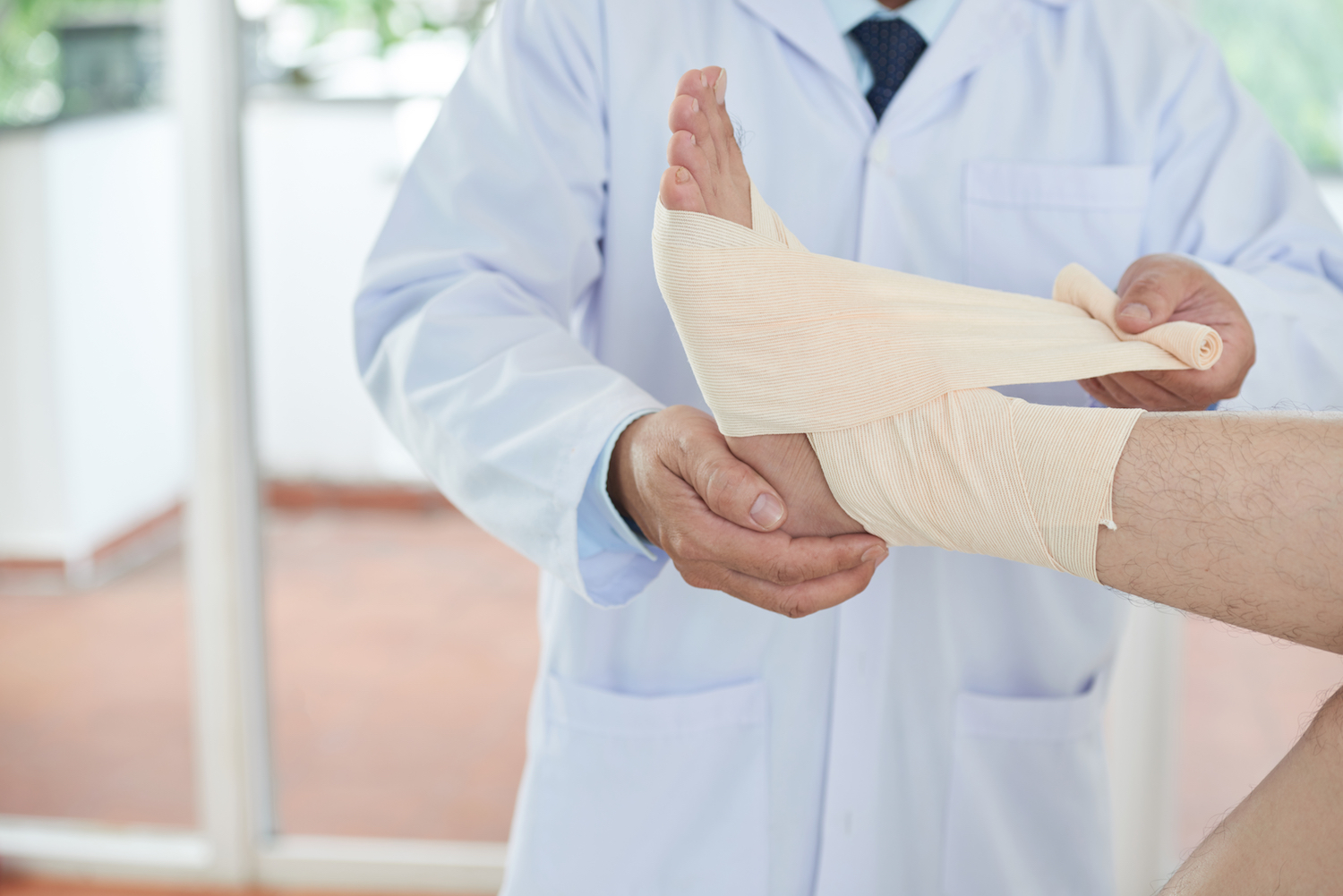
How to manage dressings?
One week after the operation, the first dressing will be redone by the surgeon. The following ones will be done by a nurse. The liberal nurses are perfectly qualified to carry out these new dressings. They will be changed every two days for two weeks.
After two weeks, the threads will be removed by the nurse and you can then take a shower and wet the whole of the operated foot - drying the foot (possibly using a hair dryer) is important to avoid any maceration of the scar (presence of crusts when the scar is still recent). If externalized pins have been placed, your scar can also be wet, provided that the visible end of the pin is dried well.
To contact the
Foot Surgeon
Saint-George Polyclinic
Hall 3 - 3rd floor
2 avenue de rimiez
06105 Nice
Phone
04 93 169 169
